This page has been discontinued and an easier explanation has been put in the manual. That explanation is Nnej's and Nnej's alone
How To Play Cards
Short Version
Challenger gets to pick columns and challengee rows. Both of you are trying to find the intersections between corresponding rows and columns. ei the intersection between the A row and A column. Put a B card there you get face value points. Put an A card there you get double points.
Long Version
The rules quite frankly are confusing.
So here's how a round will work. The play cards link will bring up a list of people in the current town you can challenge to a game. It opens in the popup window so you can continue to work on whatever task you're doing in the background, but you will need to keep an eye out for botchecks behind. Each player will need at least 6 cards, once the challenge is accepted you will see the card screen. To the left is the playing area and to the right is your deck. To start with you can choose 6 cards from your inventory and click on them to add them to your deck. Then you will be given a form to select select letters for either the rows or columns of the board, one player labels the rows and one player the columns without the other player seeing. Then players take turns placing cards by clicking the card in their deck and then the spot they wish to place it, following the directions to see whose turn it is.
That's easy enough.
So, if you're the challenger you play columns.
So I challenged
Poseidon and picked my columns as follows.
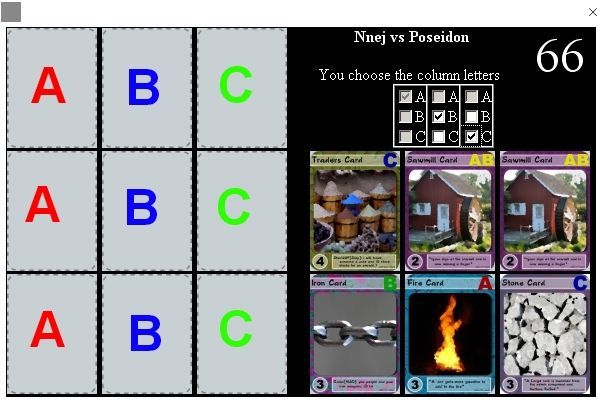
Note that the “spots” I picked don't matter at all. All they do is assign columns.
Poseidon got to pick the rows. I have put his checkboxes off to the side.
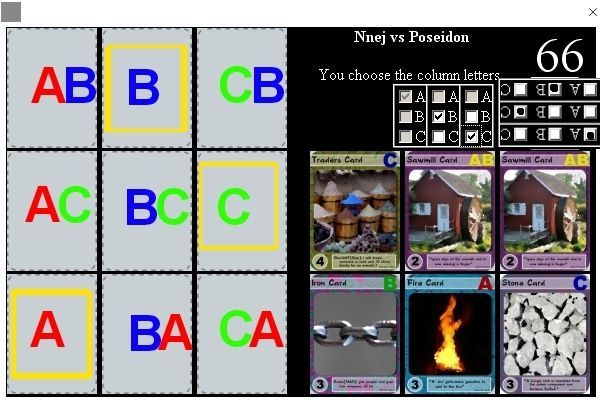
Those gold boxes are the “spots” you want to lay your card on, because they are where the columns and the rows intersect.
So you play your game. Strategies on how to get those spots will differ.
Now if you lay an A on the A intersecting spot you get double points for that card. Same with B on B and C on C. However, if you put say a B card on the A intersection spot you do not get double points. You get points, but only the face value amount of points.
Now, when you're done with the game the points will be added up and and the winner will get one card from the original six cards the opponent picked.
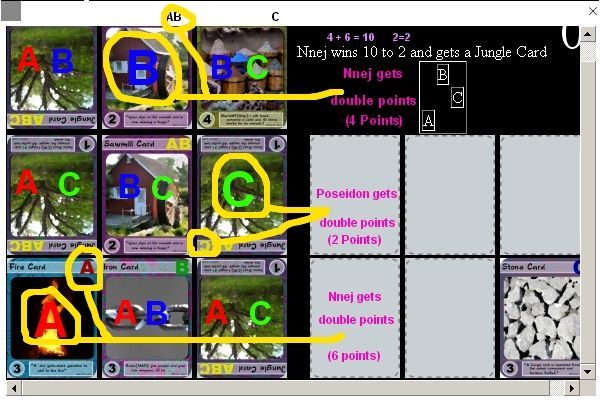
In this case, there were only double points. The little map on that picture shows you where the intersections where.
At the end the scoring is done as follows, each players rows and columns are combined to choose 3 squares where the letters match. Those 3 cards are scored to the person who placed them, at face value if they do not match the letter for the square and at double the value if the letters do match.
Now,
trubble challenges me. So he has columns and I have to pick rows.
What I picked:
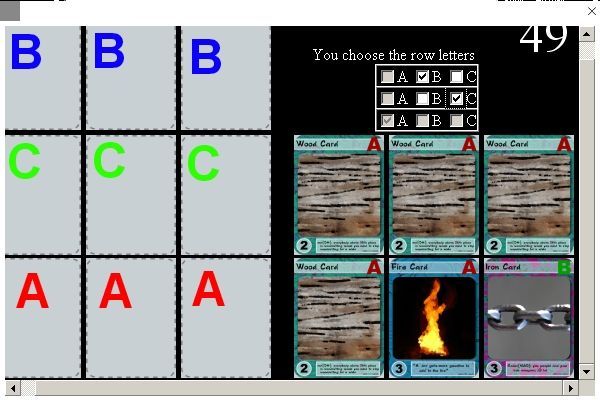
What he and I both picked toghether:
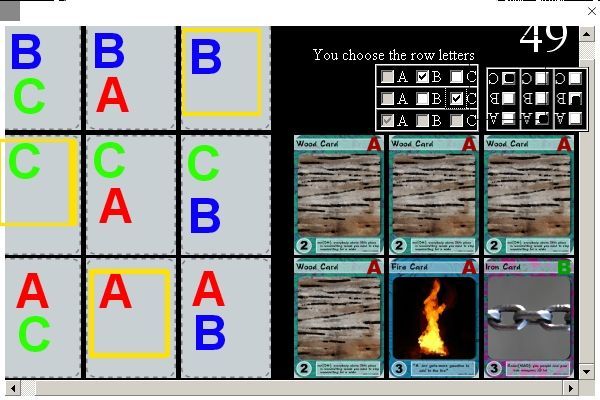
The outcome:
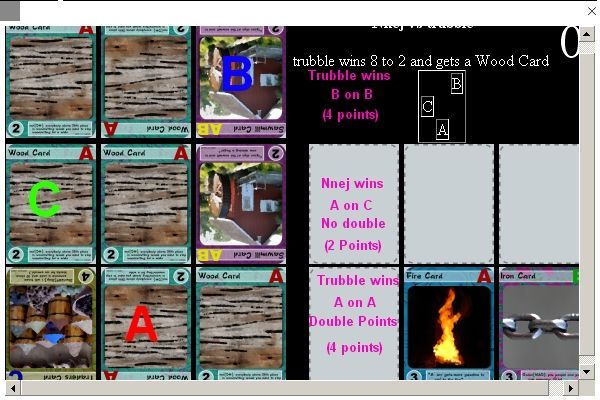
Note that that time there was an A on a C so I only won 2 points for that woodcard, not 4.
Ties
During a tie the person who layed down the most cards that won him/her points wins
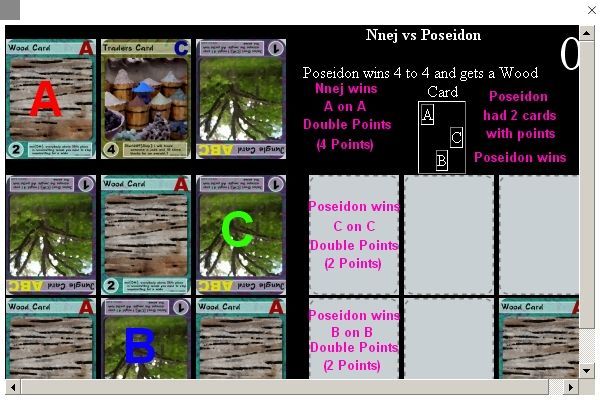 in the case of a tie the player with more cards selected.
in the case of a tie the player with more cards selected.
Tell me if this actually helps. All I did was rearrange the rules a bit, maybe this helps? All I know is I read them wrong so many times, this time they finally make sense. I provided pictures to help.
4466 people discovered Nnej's secrets.
Nnej amazing work, so helpful and i genuinely know how to play cards now, thanks loads jenn ~ jinxter
NNEJ I found an error. Tie goes as a win to the defender, or second player. Also did you explain that the rows appear inverted to the challenger but are rightside up for the challenger? – Beorn
Ties go to the person who won the most intersection. If I won the A intersection and recieved 12 points, but someone else won the B and C intersection and recieved 12 points total, the someone else would win. I tried to imply the inverted thing by putting the opponant's pick's upsidedown. -Nnej






